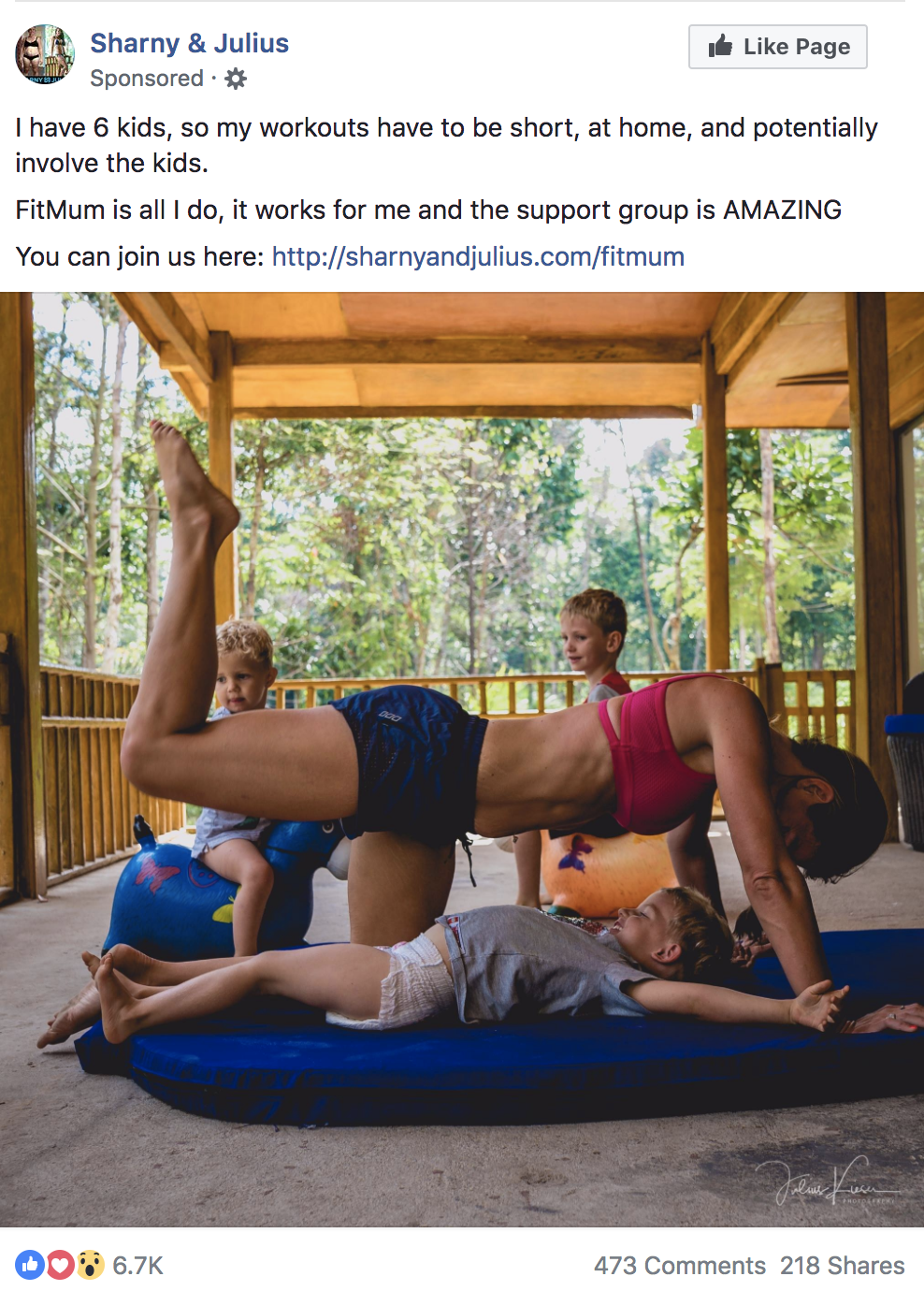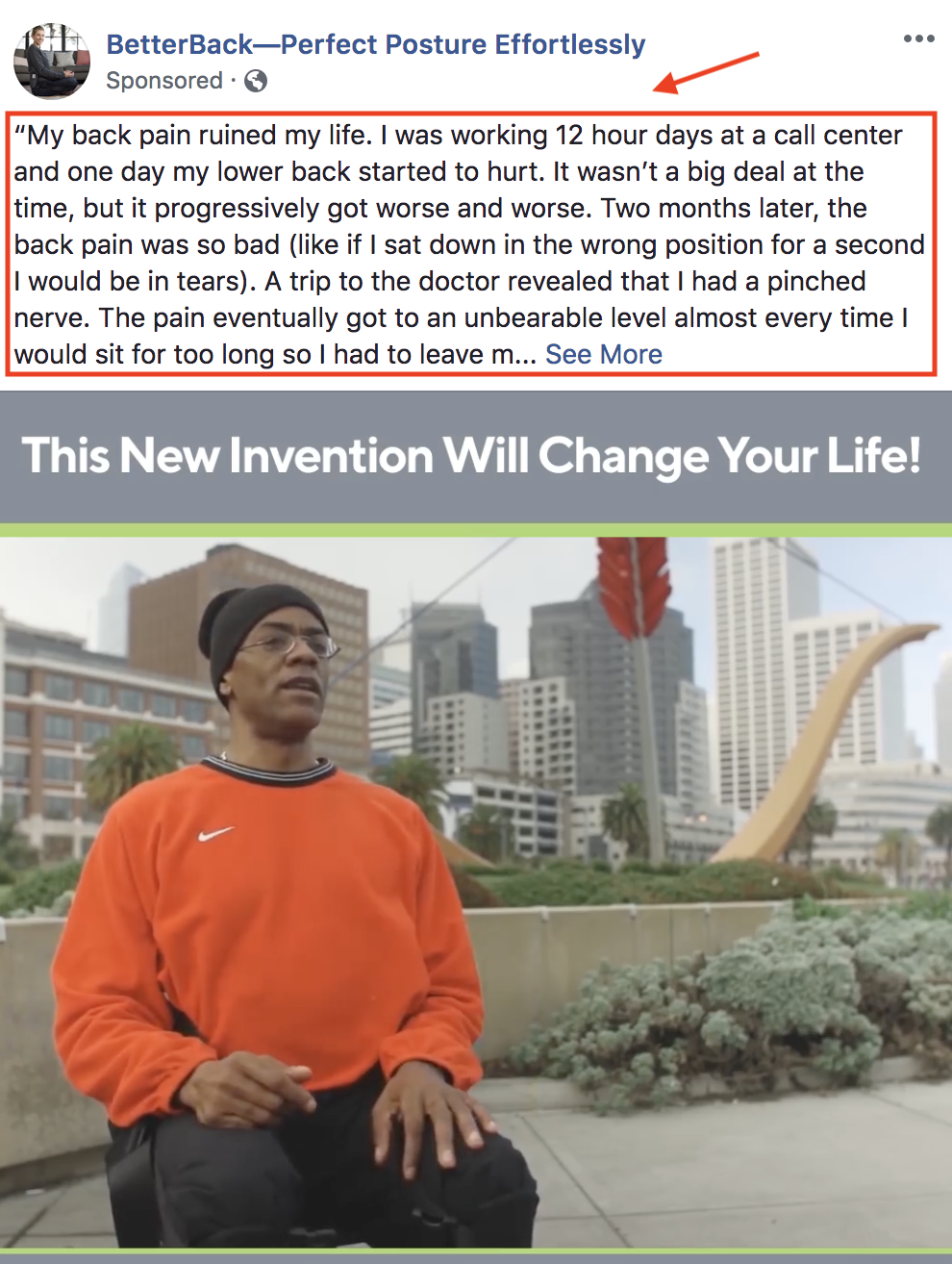How many Facebook ads do you see in your news feed a day?
According to Social Media Examiner, 93% of marketers use Facebook advertising regularly. That’s about 3 million businesses using Facebook to market themselves. Every day these brands text, call, email and target us with their Facebook ads, overwhelming us with offers.
In fact, we’re so used to being targeted by brands everywhere on the web that our brain automatically tries to block out all the noise and ignore those ads. Yet millions of businesses base a huge part of their revenue stream on Facebook ads, so they must be getting through to us somehow, right?
How do some brands manage to drown out all the noise and reach us? What separates the successful ads from the rest?
There’s actually a pretty simple answer to that: The brands that grab our attention and convert us on Facebook, are those that understand us best. They know our pain, our needs and understand our emotions and they know how to reflect those back to us in their ads.
Whether we care to admit it or not, humans are emotional creatures and our purchasing decisions are very much based on our emotions. Using images, videos, text and other elements in their ads, the most successful brands have done their research and know what emotions influence their specific target audience, what makes them stop everything they’re doing and click on that ad.
Brands that know their audience well, understand that people buy products and services because of how they make them feel rather than the rational benefit they gain. They know that using emotion is key to standing out in a crowded market and grabbing your prospect’s attention.
Let’s dig into the ways you can use emotion in Facebook ads to grab your prospects attention:
Table of Contents
4 Ways to leverage emotion in your Facebook ads
#1: Emotional value > Benefit
Rather than focusing on the service or product you’re selling, focus on the outcome.
To grab people’s attention you need to make a promise, what is the one thing people will walk away with after buying your product? Or hiring your services?
For example: A task management platform isn’t selling the ability to get a task done, it’s selling the opportunity to sort out all that mess you have in your head, reduce stress and perhaps even impressing your manager with your efficiency.
Putting theory into action:
In her ad, Mel Robbins speaks directly to the camera and says: ”Imagine for just one second how awesome it would be if you could stop holding yourself back”.
Introducing her online course for building self-confidence, she jumps straight into the emotional turmoil of self-doubt and holding yourself back. She shows segments of videos of people hugging her and thanking her for “saving” them and taps into the real desire her target audience has. She doesn’t talk about what you get in the course, what you actually learn or how much it costs, just the emotional result: the promise for a better life and higher self-esteem.

#2: Telling a story
We’ve all seen this happen; huge causes with hundreds, sometimes thousands of casualties in need of urgent donations and resources struggling to get the help they need. Suddenly a compelling story about one person’s journey, their struggle, and challenges turn everything around and donations coming flooding through.
This hero’s journey can be seen in every film and book you read too; a single person’s journey can move us to tears, laughter, empathy and change our behaviors, even our beliefs. That is the power of storytelling. Personal stories that resonate and spark emotions within us, causing us to take action.
“Stories that are personal and emotionally compelling engage more of the brain, and thus are better remembered, than simply stating a set of facts.” Paul J. Zak Founding director of the Center for Neuroeconomics Studies
Simply put, we don’t remember numbers, statistics, features or even pricing, we remember how something or someone made us feel. The more compelling the story, the more personal and similar it is to your customer’s story, the better it will resonate and inspire action.
Putting theory into action:
Use video ads and copy to tell a compelling story. The best stories are those that resonate with your prospects and make them say: “Hey, that happened to me!”, “OMG, that’s me”, or “Damn, that could happen to me”.

Once you know what emotions drive your customers into action, you can tell their story, focus on intriguing them, getting them to click on that the “read more” button or click through to your site to hear more.
You might have also noticed that most ads are short and don’t have much text, but I’ve found many times that when the story is compelling, people want to read the content and have no problem with the long copy at all.
In fact, I have consistently found that our Facebook ads with longer copy, work significantly better than ads with short copy:
 The ad with the longer copy had almost 200% more conversions than the shorter one.
The ad with the longer copy had almost 200% more conversions than the shorter one.
As Asia Matos, Founder of DemandMaven adds:
“How many times a day do you scroll right past incredibly boring and not-that-insightful ads on Facebook? It’s because they haven’t done the psychological or emotional work of driving demand.
The thing that gets people to move on an ad (i.e. click-through, complete a form, or watch a video), has 100% to do with what they believe they’ll gain. It’s the psychology of “you have this and I don’t” and the emotional state of “I believe I need this, and you can provide it to me”.
Tactically, this manifests in dozens of ways — my personal favorite being writing long-form (yes, long-form) copy for the ads and approaching it with a conversion copywriter mindset. You’re essentially using the classic framework PAS when writing the ads: problem, agitation, solution. Why? Because people actually read that copy because they want to know what you have that they don’t and what they’re going to get out of it.”
#3: Choosing your Images
One of the most important rule I follow with every landing page, email and ad I write, is “Don’t just say it, make em’ feel it”. It’s one of the pillars of my Emotional Targeting Framework and it’s based on the emotional effect images have on us.
The images and colors you use in your Facebook ads will determine if people see your ad AND if they think it’s worth giving it a moment to consider (check out this guide on choosing high-converting images).
When it comes to choosing images, most ads (similarly to landing pages and websites) tend to use an image of the product their selling or something to represent it:

Google illustrates someone sitting in front of a computer writing code and retailers use photos of the items they’re selling.
However both Lego and Slack highlight the value of their product vs. what it is.
Lego highlights the pride and happiness kids feel when playing with Lego and imply the kind of future kids who play with Lego have in store for them.

Slack focuses on the relief you’ll feel and the fun you can have, without all those meetings you will now be spared from by using Slack. 
Color plays a big part here too, it determines what our eye will focus on when we look at the ad and how we feel. Yes, colors have an emotional effect on us, but not necessarily the way you may think, check out this guide to choosing the right colors for your audience.
Putting theory into practice
Try AB testing a few different visuals for your ads. Videos work really well but images go a long way too.
Brainstorm with your team about the possible outcomes and value you get when using your product/service (e.g taking that dream vaca) AND most importantly ask your customers and clients what their dream outcome is and what jobs they’re trying to get done (this is where surveys and interviews come in very handy, here’s a list of questions you can use to get started with).
#4: Using social proof
Social proof is one of the most powerful tools you can use on any page, let alone Facebook. There is power in numbers and the more people we see going in a certain direction, the more appealing it is to us.
Social proof isn’t just there to tell people how amazing your product is, it’s there to remove roadblocks. Testimonials and reviews can be used to reduce common concerns people have, hesitations and address specific questions that come up.
For example, rather than people having to take your word that your service includes round-the-clock customer service, place a customer’s story on your site detailing how a specific representative of the company helped her at 2 in the morning with the issue.
Putting theory into action
There are many ways you can use social proof to increase conversions. For example, Christmas Abbott mentions the number of people who are already participating in her program AND features videos snipets of people explaining how she changed their life:

You can also use a written testimonial as your ad copy, or even in the text below your images, like BetterBack does:

You can even include screenshots of mentions on social media, reviews you’ve received and emails:

It’s all about the process
With optimization, it’s all about the process. If you want to start using emotion in the best kind of way to increase your Facebook Ads conversions, you’ll need to continuously hypothesize, test, analyze and keep going. If you want to truly get this right, there’s only one way to go about it: get to know your customers better, look beyond the behavioral elements (e.g geographical location and age) and understand them. What emotions motivate them, what they care about and what they’re biggest outcomes are.
Facebook Comments
Powered by Facebook Comments

